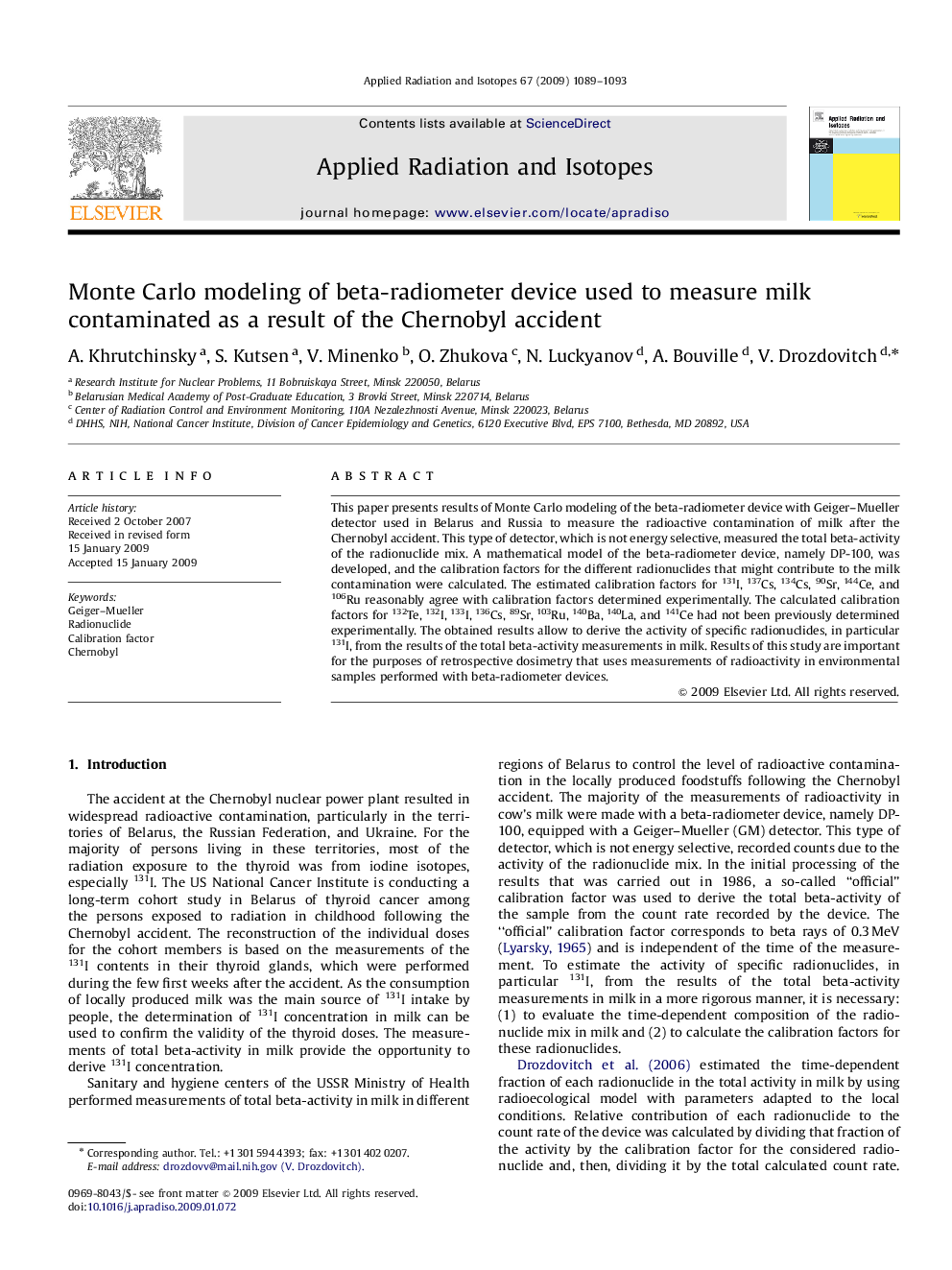| Article ID | Journal | Published Year | Pages | File Type |
|---|---|---|---|---|
| 1878230 | Applied Radiation and Isotopes | 2009 | 5 Pages |
This paper presents results of Monte Carlo modeling of the beta-radiometer device with Geiger–Mueller detector used in Belarus and Russia to measure the radioactive contamination of milk after the Chernobyl accident. This type of detector, which is not energy selective, measured the total beta-activity of the radionuclide mix. A mathematical model of the beta-radiometer device, namely DP-100, was developed, and the calibration factors for the different radionuclides that might contribute to the milk contamination were calculated. The estimated calibration factors for 131I, 137Cs, 134Cs, 90Sr, 144Ce, and 106Ru reasonably agree with calibration factors determined experimentally. The calculated calibration factors for 132Te, 132I, 133I, 136Cs, 89Sr, 103Ru, 140Ba, 140La, and 141Ce had not been previously determined experimentally. The obtained results allow to derive the activity of specific radionuclides, in particular 131I, from the results of the total beta-activity measurements in milk. Results of this study are important for the purposes of retrospective dosimetry that uses measurements of radioactivity in environmental samples performed with beta-radiometer devices.
